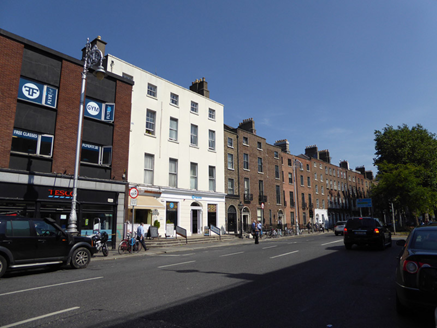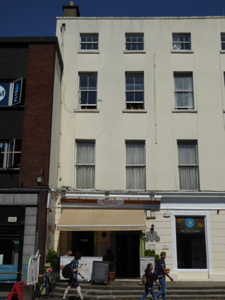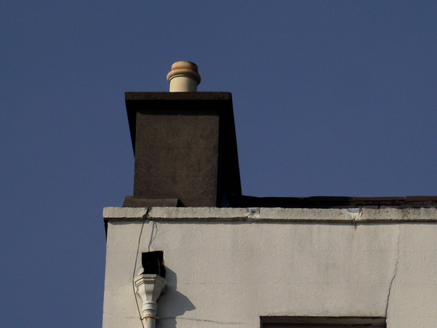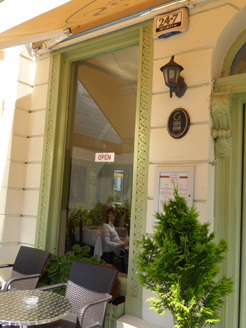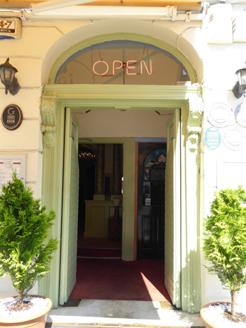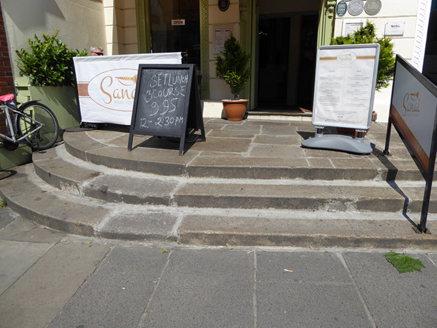Survey Data
Reg No
50100464
Rating
Regional
Categories of Special Interest
Architectural, Artistic
Original Use
House
In Use As
Restaurant
Date
1760 - 1780
Coordinates
316514, 233355
Date Recorded
22/06/2016
Date Updated
--/--/--
Description
Attached two-bay four-storey over basement former house, built c. 1770 as five-bay house now subdivided with No. 17a, having single-storey additions to rear. Now in use as restaurant. M-profile pitched slate roof, having parapet with masonry painted coping and parapet gutters; rendered chimneystack with clay pots; cast-iron hopper and downpipe. Painted rendered walling with horizontal channelling to ground floor. Square-headed window openings with plain surrounds and painted masonry sills, having guilloche-moulded architrave to ground floor window and continuous moulded masonry sill course to first floor. Timber sliding sash windows with cavetto horns, one-over-one pane to first floor, two-over-two pane to second floor and three-over-three pane to top floor; apparently timber sash windows to rear. Round-headed doorcase with fluted pilasters, acanthus scrolled console brackets, entablature, plain fanlight and recent timber door. One step from doorway to stone-paved platform spanning front façade with three steps to street level, curving to west. Recent metal railing at west end on brick plinth. Building set back from street-line to west but forward of that to east.
Appraisal
A large and well proportioned formerly five-bay late Georgian townhouse subdivided into this building and its neighbour to the east. The pair are elevated above street level by a continuous stepped platform, and the scale of their vertical proportions dwarfs the neighbouring four-storey houses that are set back to the east. Despite some loss of original fabric the pair is relatively well-retained, displaying well-balanced proportions and with some ornate detailing to the ground floor openings. The occupant in 1850 is recorded as James Power, grocer, in Shaw's Directory. The unified edifice commands a strong presence on the streetscape and contributes strongly to the Georgian character of Baggot Street Lower.
